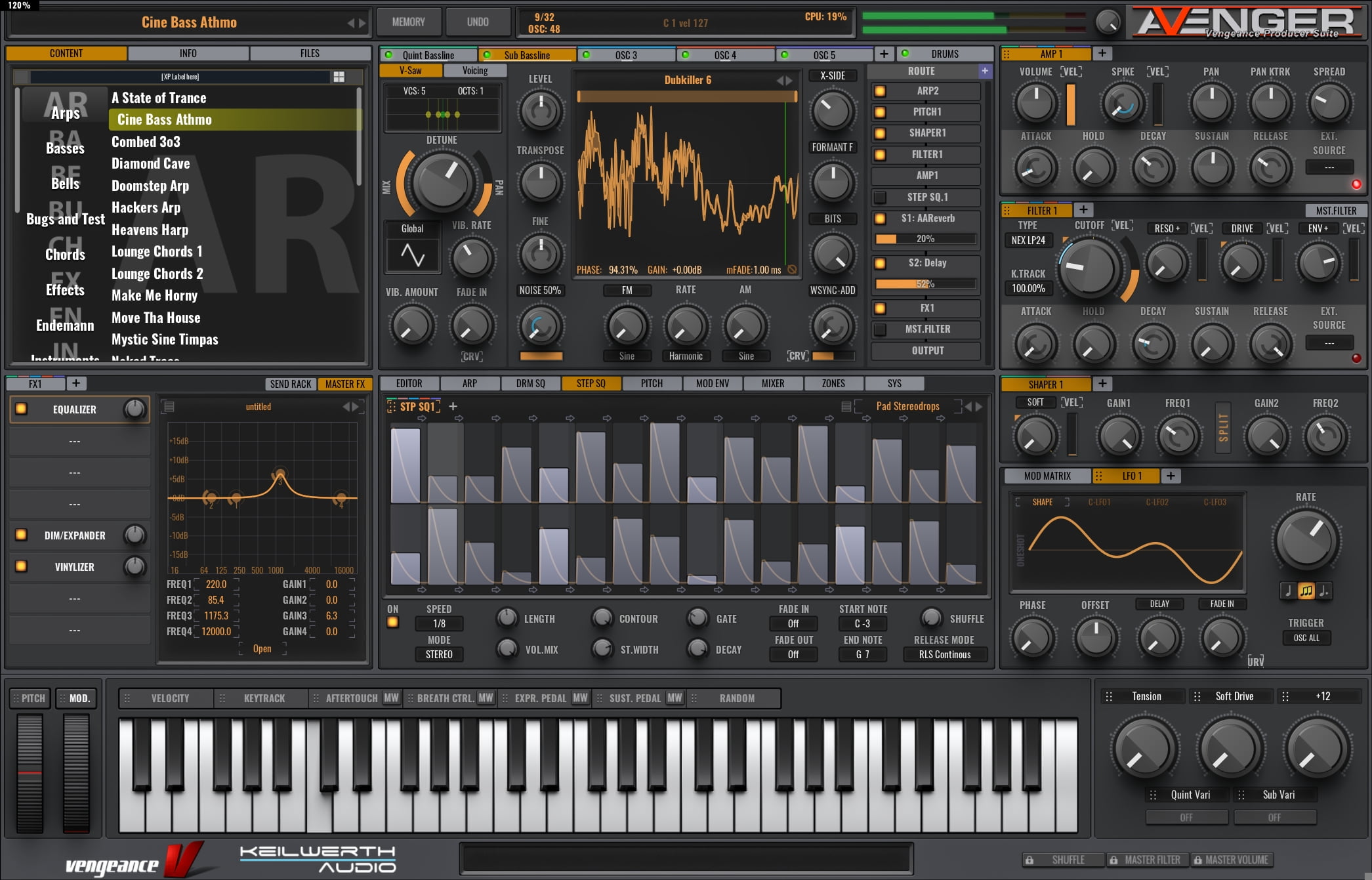
While the single-window UI and two-oscillator, two-filter architecture remains simple to use, there are plenty of unique tools. Originally launched as a pure virtual analog, over the years Hive has been fleshed out with powerful wavetable oscillators. What we love about Hive, however, is how well it balances depth and power with accessibility and CPU efficiency. Great for weird, ambient melodies and African-inspired rhythms.īerlin brand u-he make a lot of excellent plugins, and realistically you could argue that several of their synths deserve a spot in this round-up.ĭespite its age, Diva remains the go-to virtual analog for many producers, thanks to its ability to emulate a variety of hardware classics, and there’s a lot to like about Zebra2, Repro, and Bazille. For the uninitiated though, there are great tools in the factory toolkit, like the new Euclidean Drum and Tonal sequencers, eight-part devices using Euclidean rhythms, which involves spreading patterns as evenly as possible over a set number of steps. Seq modules can be customized using Lau scripting language. The latest addition is Sallen Key – drive this hard for lovely clipping.

There’s a wealth of filters, including those inspired by classics like Analog (Minimoog) and Rez (TB-303), specialist Vowel and WahWah filters and UVI’s own continuous morphing filter. v2 added a Space Echo-inspired delay too, ideal for dub-like effects. We like Formant Crusher – great for Daft Punk-inspired riffs. Don’t miss Keep Bass – this keeps your lower fundamental intact as you go nuts with Timbre!Įffects abound.
#Vengeance avenger vs omnisphere plus
The module also features comb filtering, PWM plus a multimode resonant filter. Adjusting these can push sounds into the metallic territory. Timbre controls their levels, spectral distribution, and odd/even balance. The central views are used to switch between editing your individual modules. To the right of the UI is the browser, used to add modules and samples. This sits directly above the inspector, used to view details and settings of whatever you’ve selected above.
Over to the left-hand side you’ll find the Part Controls, which is used to navigate the layers and elements of your instrument. Learning curve aside, maybe the only synth you’ll ever need?įalcon 2 is a complex instrument and its UI can be pretty daunting for new users, so let’s take a quick tour. You can stack up multiple instruments in this one plugin, complete with their own complex effect routings. However, each Part can consist of its own multilayered Program, which itself can be assigned an assortment of layer, zone or keyboard split configurations. The overall instrument can load any number or ‘Parts’, each of which can have its own MIDI channel.

It takes the multi-timbral synth to the next level. Falcon 2 has OSCS for pretty much every sound generation type, from sampling and wavetable through virtual analogue, drum and organ generators and additive synthesis. This is possibly the most feature-packed virtual instrument around. Realistically, in 2020, with a moderately powerful laptop and around £200 to spend on a plugin, you can have all the tools you could possibly need to create some cutting-edge electronic sounds. Modern ‘power synths’ tend to be do-it-all affairs too stuffed with so many sound sources, effects, and modulation tools that they can do percussion synthesis, analog emulation, digital soundscapes, and everything in between.

While it’s not like there isn’t still innovation happening in the realm of top-end hardware synths, it's certainly true that these days, the most innovative and feature-packed new instruments tend to arrive in plugin format. Instruments such as Moog’s early modular systems, Fairlight’s cutting edge CMI workstations or the early wavetable synthesis of the PPG Wave each allowed musicians to explore completely new territory, but came with the kind of price tags you’d expect to see on a car or even a house. Back in the ’70s or ’80s, if you wanted to be at the cutting edge of sound design or synthesis technology, you’d need access to a large studio and some deep pockets.
#Vengeance avenger vs omnisphere software
Music production’s shift into the software realm over the past few decades has done a lot to democratise electronic music.


 0 kommentar(er)
0 kommentar(er)
